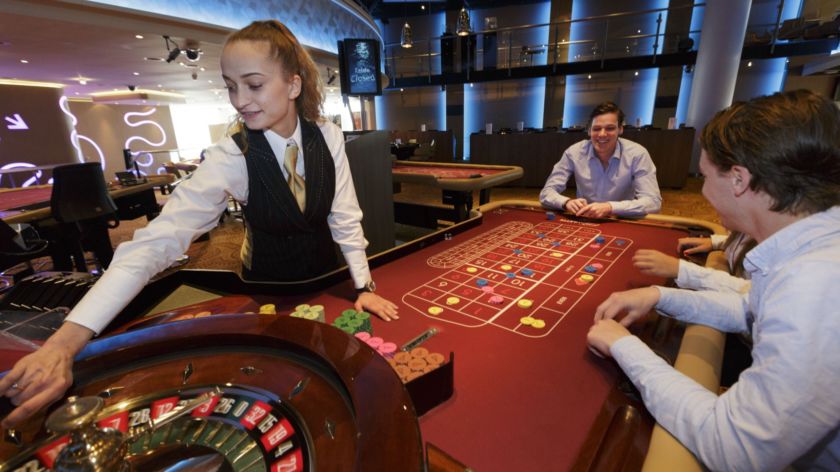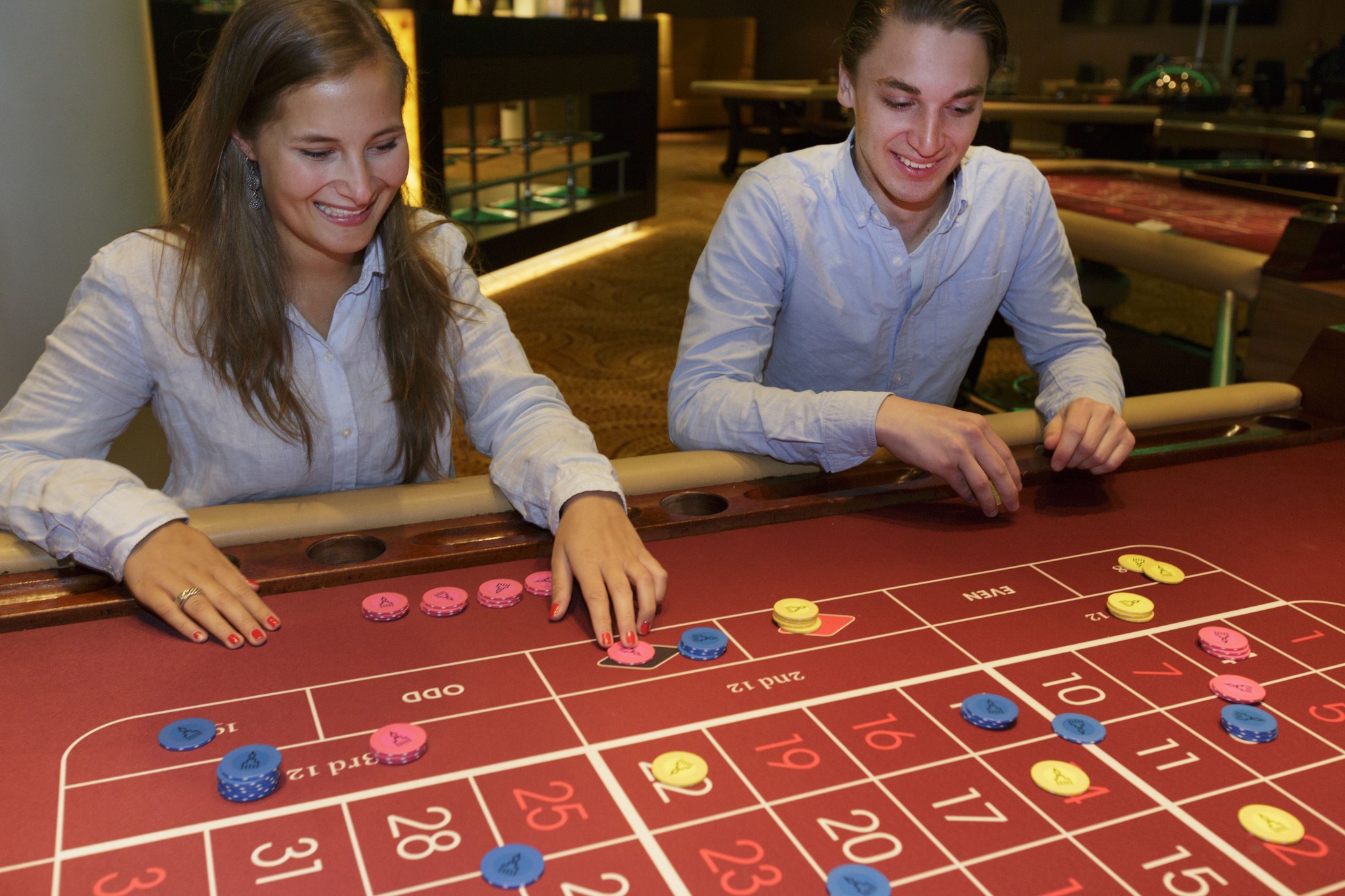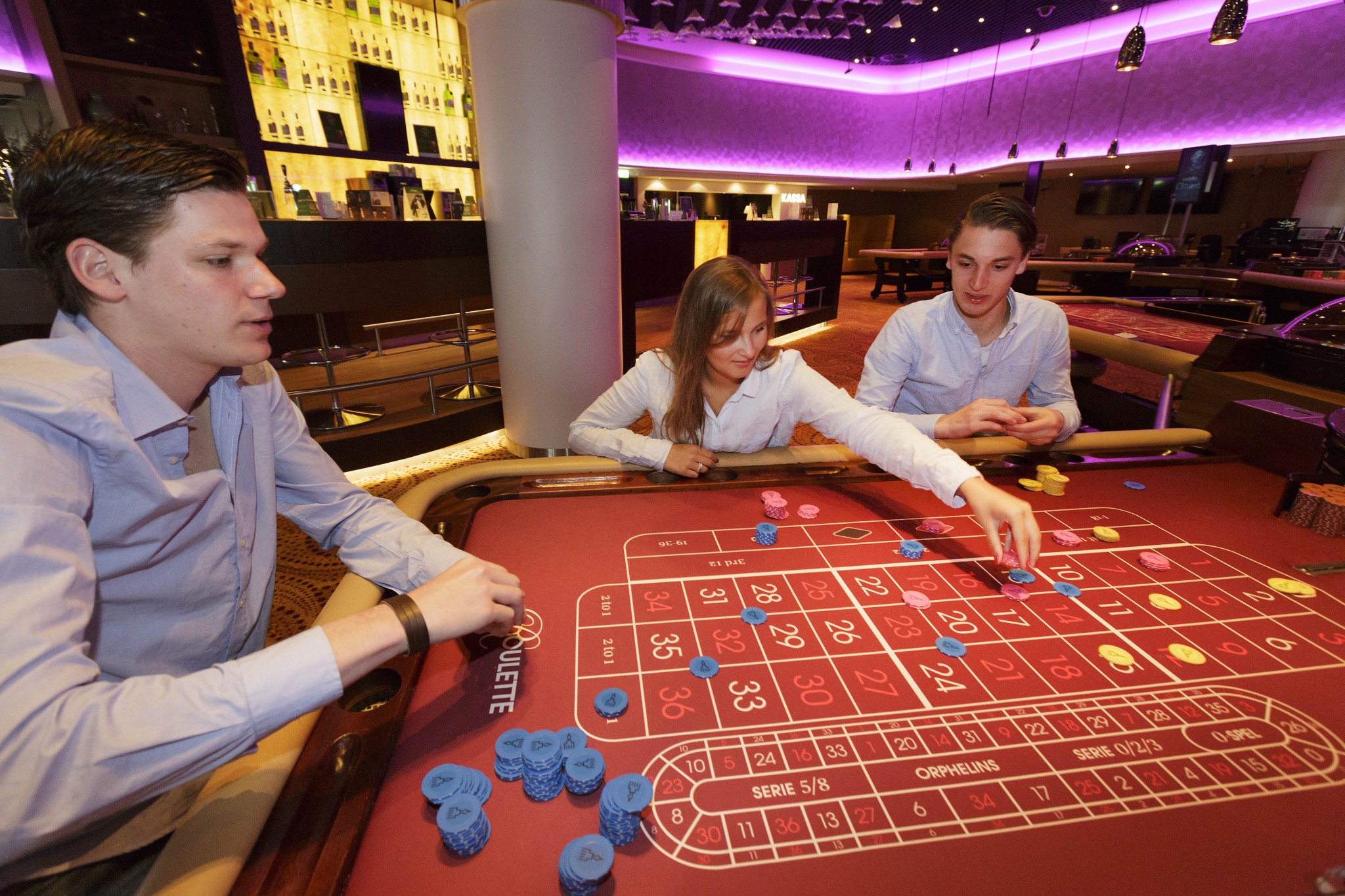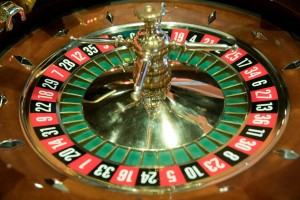Scientifically responsible gambling
-
 Foto: Gerard Verschooten
Foto: Gerard Verschooten
What’s the most lucrative way to play roulette? Many volumes have been written on the topic by some of the foremost scientists in the world. Vox presents three methods used in casinos. Can science trump chance?
‘Oh, so you all have a strategy?’ The croupier at Holland Casino does not even attempt to suppress his smile. ‘And you’re from the university? I wouldn’t be surprised if we’ve had every Radboud mathematician here at our tables at some point.’ Roulette exerts a magical attraction for anyone with an interest in numbers, probabilities or free money. After all, how hard could it be to beat that wheel? There must be some method that guarantees leaving the table with a little extra spending money?
Together with three students, Vox enters the Holland Casino on the Waalkade. Each of the students was given a specific gambling strategy and two hundred Euros in cash (the agreement is that they can keep any winnings, provided they are fairly split three ways).

Business Administration student Frederique Popelier will use the most well-known strategy: the Martingale. The idea is very simple. You begin with the minimum bet (five Euros) and place it on red or black. If you lose, you double your bet in the next round. This process is repeated until you win. Eventually you will win and, using this strategy, you will always recover your losses, in addition to your minimal bet. It sounds simple and it is.
‘Piece of cake,’ says Popelier. After fifteen rounds she’s earned 25 Euros. However, it almost goes up in flames. The Martingale always works, but you need steely nerves and the money to keep going, even after losing five times in a row or more. After half an hour Popelier is on a four-loss streak. Having just lost 75 Euros, the Martingale strategy stipulates that she now needs to bet 80 Euros. If she loses this time, almost all of her money will be gone. The “gambler’s ruin” awaits. Popelier puts 32 chips on red, hides nervously under the table, and wins.
Hiding under the table
Losing five rounds in a row when the odds of winning are close to 50 per cent each time, sounds improbable and it is. The odds are about one to thirty. But if you play more than thirty rounds, like we did, there is a real chance of being “unlucky” on occasion. If you lose eight times in a row, you need almost 1300 Euros to be able to keep going for the ninth round. And such a scenario is not all that unlikely. During our evening of gambling, we witness a “red streak” of eleven consecutive rounds. Imagine if you’d stubbornly bet on black each time.
If you lose eight times in a row, you need almost 1300 Euros to be able to keep going for the ninth round
Popelier draws the same conclusion. At round 55, the Martingale stipulates that she must bet 80 Euros again – for the third time. She counts her shrinking stack of chips, says that she was hoping to purchase a nice jacket tomorrow with her winnings and, thus, withdraws from the game. The eighty Euros are hers. The Martingale experiment has come to an end. It is now safe for Popelier to come out from hiding under the table.
Lars Wagener, a Public Administration and Political Science student, is using a strategy loosely based on an academic paper from 2012 called “Predicting the outcome of roulette” which was published in a respectable academic journal on chaos theory. With this method – which has been tested in a lab, not in a casino – the authors claim to be able to gain an advantage of 18 per cent over the “house”. This does require a high-speed camera that measures the speeds of the spinning ball and the wheel. Software then calculates where the ball will land. Since we do not have this equipment, Wagener, at our request, is focusing on a similar, more user-friendly method: the dealer’s signature. The premise of this theory is that the trajectory of the ball is not completely random. This could be due to the roulette table itself – it may not be completely level or there may be a speck of dirt on the track – or the “hand” of the dealer who continually uses the same movement to launch the ball into play. The idea is that these kinds of factors can result in the ball continually landing in roughly the same spot.
Croupier
Wagener is taking this theory seriously. He stands next to the wheel and with each playing round observes carefully where the ball lands. He refrains from betting until he’s observed a few rounds. His bets are successful. After fifteen rounds he already has 85 Euros in winnings. But then the croupiers switch and his winnings evaporate in seven turns. This pattern is repeated once again. Finally, after the croupiers switch once again and he sees his cash dwindle in a couple of rounds from 300 to 230 Euros, he is fed up. He decides to take a break with each new croupier. ‘ll observe a few rounds, so I don’t keep losing,’ he says. The croupier laughs. Wagener doesn’t.
Photo: Gerard Verschooten
That last comment is familiar to Guillaume Sescousse. Sescousse conducts research at the Donders Institute into the brains of people with a gambling addiction and, therefore, knows exactly what is going on in our brains when we are at the roulette table. “People like to maintain the illusion of control over the outcome,” says Sescousse. “They believe they should bet more when they’re on a winning streak and think that certain croupiers are lucky or unlucky. It’s nonsense, of course, but there are still a countless number of people who swear by these kinds of assumptions. This phenomenon occurs regardless of the education or intelligence of the gambler, and will probably also occur with your own test subjects.” After almost two hours of playing, Lars Wagener ends with 180 Euros – a 20-euro loss – probably due to those conniving new croupiers each half hour.
Drugs
Joris ten Berge, a Commercial Economics student, fares better. His assignment is to follow his instinct, to make intuitive choices and more of these hollow catchphrases – in stark contrast to all that scientific mumbo jumbo. His gambling strategy seems completely random, but isn’t. First for all, Ten Berge gradually increases his bet. He carefully starts with two and a half Euros on the left and five on the right. After an hour and a half – in round 81 – he puts fifty Euros on black. He loses. ‘Ah well, still enough left.’
‘In that sense, gambling works the same way as drugs,’ says neuroscientist Sescousse. ‘You need more and more to experience the same feeling of excitement. You’ll get bored and will continually seek to increase your bet. You want more.’ At the end of the experiment, our recreational gamblers confirm this. ‘Once I had bet twenty Euros, I really didn’t feel like going back to betting five Euros,’ says Popelier.
Other observations: Ten Berge’s intuition is partially based on the large screen near the gambling table which shows which numbers the ball has landed on frequently that evening and which numbers it hasn’t. The number thirty occurs often, and thus this number is included in Ten Berge’s gambling pattern. On the other hand, zero has not occurred at all the entire evening. Based on reverse reasoning, Ten Berge also places chips on this number. ‘The ball will eventually land on this number some time tonight.’ He’s right. Unfortunately it happens while he’s gone for a toilet break, much to the amusement of the others.
‘Some casinos employ excellent psychologists,’ says Sescousse. ‘There is a reason those screens are there, after all. If the ball lands on black six times in a row, people tend to bet on red more frequently and with higher bets. Their reasoning is that it seems highly improbable for it to land on black for the seventh time, while, in actuality, the chance remains 50 per cent, as always.’ Nevertheless, Ten Berge is on fire! After a slow start his intuition has “kicked into gear”. He reaches 500 Euros by round 71. But he gets cocky, and this leaves him with a “mere” 355 Euros by the end. However, this does mean that Ten Berge is the only participant to end up with a nice profit, and no scientifically responsible strategy was required. Because betting ten Euros on the number fourteen as “a tribute to Johan Cruijff” and still leaving the roulette table with a tidy profit at the end of the evening, is a level of luck that cannot be matched by any strategy. / in collaboration with Gijs Swennen
[kader-xl]
American Claude Shannon (1916) is the founder of information theory, which means he was indirectly responsible for the first digital computer. But in the early sixties Shannon’s focus changed dramatically to gambling. More specifically, roulette. With his young colleague Edward Thorp of the Massachusetts Institute of Technology (MIT) he worked at home to develop a secret device that could predict approximately where the ball would land on the roulette table. He was convinced that such a device was possible. After all, there are only two variables to take into account: a spinning ball and a spinning roulette wheel. How hard could it be? Thorp had an interesting theory. He stipulated two options: either the roulette wheel works perfectly or it has an imperfection, for instance it is not level. If a wheel works perfectly, basic physics can be used to calculate where the ball will end up. After all, this would mean the laws of physics could operate undisturbed. Should the wheel be a little askew to one side, the ball would be more likely to land on that side. Estimating which number this would involve is important. In other words, both perfect and imperfect roulette tables offer possibilities.
So they went to work, veteran Shannon and young protégé Thorp. They claimed to have built the world’s first portable computer; a device that measured the spinning velocity of both the ball and the wheel and calculated where the ball would eventually land. The two claimed that they could achieve an advantage of 44 per cent if the roulette table was even a little askew. It worked in the lab, but at the casino their main finding was how vulnerable their computer was. The experiment failed, after which Thorp and Shannon started focusing on other “research”, such as counting cards at the blackjack table. This earned them a lot of money a short while later. That is, until they received a casino ban and were no longer allowed inside.
Source: W. Poundstone, Fortune’s Formula: The untold story of the scientific betting system that beat the casinos and Wall Street, New York, 2010
[/kader-xl]





